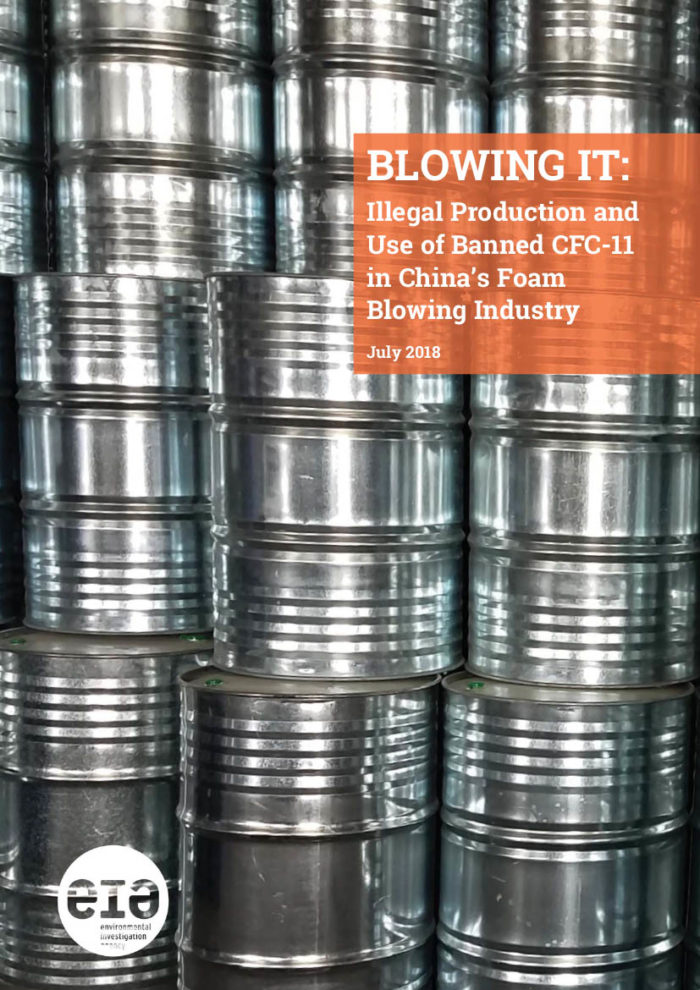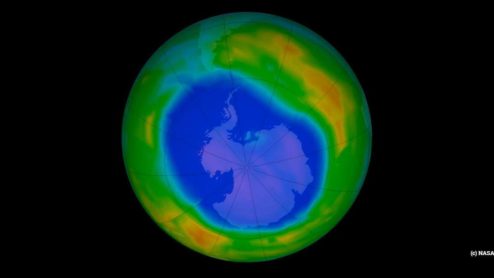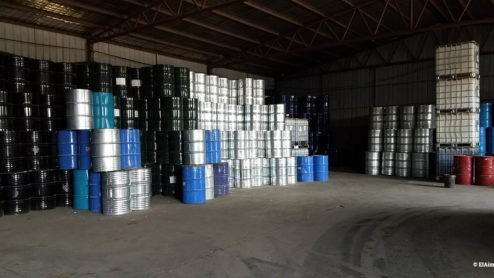China’s rogue emissions of banned CFC-11 could delay recovery of ozone layer
China may have acted swiftly on our information that the banned ozone-destroying chemical CFC-11 was being produced and used in its building industry but those rogue emissions could still significantly delay recovery of the Earth’s ozone layer.
A new paper published in Nature today (19 December) looks at the potential delay to the ozone hole recovery caused by the unexpected CFC-11 emissions.
After scientists reported a huge, inexplicable spike in the emissions of banned CFC gas in the atmosphere last year, our undercover investigators traced it back to illegal production and use of CFC-11 in the polyurethane foam sector in China.
 The new paper, Delay in recovery of the Antarctic ozone hole from unexpected CFC-11 emissions, examines the potential damage done.
The new paper, Delay in recovery of the Antarctic ozone hole from unexpected CFC-11 emissions, examines the potential damage done.
According to the paper, the delay could be as little as a few years if immediate action to stop the emissions is successful – ranging to as much as 18 years if emissions continue unabated.
Clare Perry, our Climate Campaigns Leader, said: “We agree with the authors that the worse-case scenario of an 18-year delay in the recovery of the ozone layer is unlikely.
“China reacted very quickly to EIA’s investigations in 2018 and carried out a nationwide enforcement effort, which is ongoing, and the latest atmospheric data indicates emissions are starting to come down in response to these actions.
“On the other hand, the likelihood of immediate effective action to stop the illegal emissions resulting in a delay of just a few years is a rather optimistic scenario.
“There remain significant uncertainties in what has actually happened and the effectiveness of the enforcement actions so far. China has located only three illegal CFC-11 production sites, with relatively small capacities which could not account for the level of illegal CFC-11 production estimated by the Montreal Protocol’s technology experts (40,000-70,000 tonnes per year).
“A fundamental problem is that we don’t know the actual CFC-11 production level and the amount now contained in new foam materials (the ‘bank’), which ultimately will most likely leak to the atmosphere. This has a large bearing on future emissions because the emissions of the blowing agent during the foam blowing process (and the consequent amount of CFC-11 left in the foam product) vary widely.”
The 2018 EIA report Tip of the Iceberg estimated this bank of CFC-11 in the foam products created up to 2017 could be equivalent to almost four billion tonnes of CO2 (830,000 tonnes of CFC-11).
“We are urging China to strengthen and enhance its enforcement efforts and undertake comprehensive testing of foams to better understand the situation,” added Perry.



